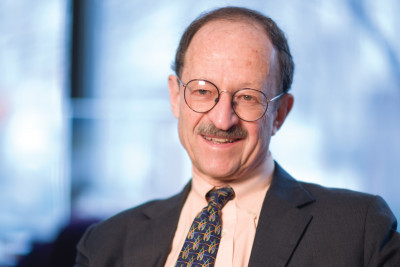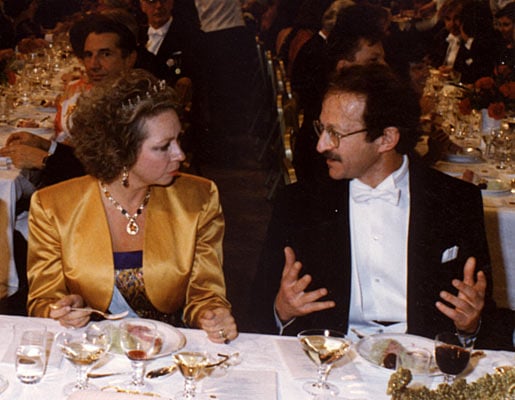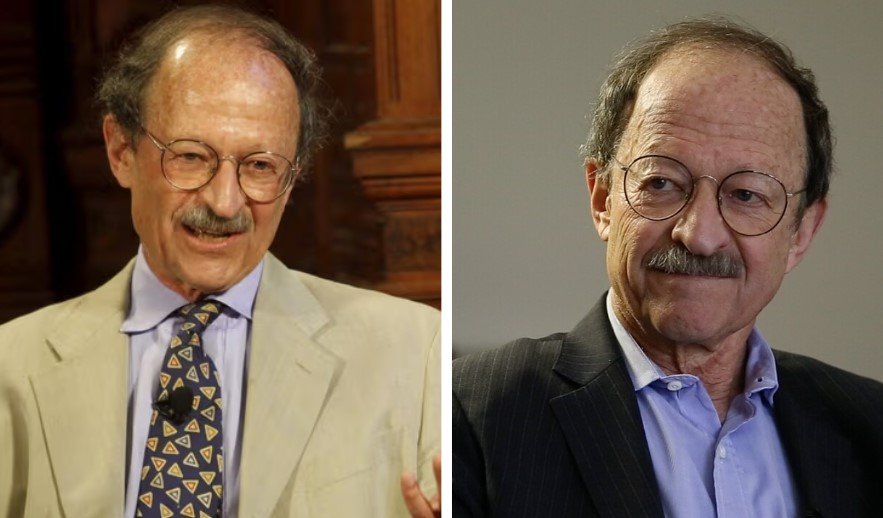In the world of biomedical science, few names carry as much respect as Harold E. Varmus. Renowned for his pioneering research in cancer biology and his leadership in public science administration, he has spent decades shaping the global understanding of genetics, molecular biology, and medical innovation. His story is one of intellect, perseverance, and an enduring commitment to making science a public good.
Quick Bio
| Full Name | Harold Eliot Varmus |
|---|---|
| Date of Birth | December 18, 1939 |
| Place of Birth | Oceanside, New York, USA |
| Nationality | American |
| Occupation | Scientist, Oncologist, Professor, Administrator |
| Specialization | Molecular Oncology, Virology, Genetics |
| Institutions | NIH, NCI, Memorial Sloan Kettering Cancer Center, Weill Cornell Medicine |
| Education | Amherst College, Harvard University, Columbia University |
| Known For | Co-discovery of the Oncogene Concept, Nobel Prize in Medicine |
| Years Active | 1960s – Present |
| Spouse | Constance Casey |
Early Life and Background

Harold E. Varmus was born on December 18, 1939, in Oceanside, New York, into a family that valued education and intellectual curiosity. His father was a physician, and his mother worked as a psychiatric social worker, both deeply involved in community well-being. This environment provided young Varmus with a sense of discipline and an early interest in medicine.
Though he initially found joy in literature and the humanities, the combination of scientific exposure from his father and the growing excitement of post-war scientific progress sparked his fascination with biology. By the time he was a teenager, he had already begun to consider a career that would blend his literary sensibility with his scientific curiosity.
Education and Academic Development

Harold E. Varmus began his academic journey at Amherst College, where he studied English literature. His love for poetry and language was evident, but his intellectual restlessness soon led him toward medicine. After earning his undergraduate degree, he briefly attended Harvard University to pursue a master’s in English but realized his true calling lay elsewhere.
Driven by a desire to understand the biology of life and disease, he entered Columbia University College of Physicians and Surgeons, where he earned his M.D. in 1966. His time at Columbia introduced him to laboratory work and the world of experimental science. These experiences, combined with his interdisciplinary thinking, set the stage for his unique approach to research — one that blends analytical precision with imaginative exploration.
Early Career and Research Beginnings
Following his medical degree, Harold E. Varmus joined the National Institutes of Health (NIH) as a clinical associate. At NIH, he became captivated by the molecular mechanisms behind disease, particularly cancer. This period was crucial in shaping his research philosophy — one rooted in curiosity, collaboration, and scientific rigor.
His early work explored the fundamental biology of viruses, leading him to join the University of California, San Francisco (UCSF) as a researcher. There, he met J. Michael Bishop, a collaboration that would forever alter the landscape of cancer biology.
Breakthrough in Cancer Research
The partnership between Harold E. Varmus and J. Michael Bishop led to one of the most groundbreaking discoveries in modern science — the oncogene concept. Together, they found that certain genes in normal cells could become cancer-causing when mutated or misregulated. This revelation bridged the gap between virology and cancer research, showing that cancer was not an alien invasion by viruses but a malfunction of the body’s own genetic code.
Their findings transformed the understanding of cancer from a mysterious disease to a genetic and molecular process that could be studied and potentially controlled. For this discovery, Varmus and Bishop were awarded the Nobel Prize in Physiology or Medicine in 1989, a recognition that marked a turning point in biomedical research.
Major Career Highlights and Achievements
After earning the Nobel Prize, Harold E. Varmus continued to influence both science and policy. He took on leadership roles at prestigious institutions, including NIH and the National Cancer Institute (NCI). His tenure as Director of the National Institutes of Health (1993–1999) was particularly transformative.
Under his leadership, NIH expanded its research funding, improved grant accessibility, and embraced emerging fields like genomics and bioinformatics. Later, as President of Memorial Sloan Kettering Cancer Center, Varmus oversaw advancements in cancer therapeutics and research strategy.
He also co-founded the Public Library of Science (PLOS), promoting open-access publishing and scientific transparency. His numerous awards, honorary degrees, and publications reflect a lifetime of exceptional achievement and public service.
Role in Public Service and Science Administration
Throughout his career, Harold E. Varmus has embodied the ideal of a scientist-statesman. His work as NIH Director under President Bill Clinton positioned him as a key figure in shaping U.S. science policy. He championed open collaboration, equitable funding, and data sharing among researchers.
Later, as Director of the National Cancer Institute (2010–2015), he emphasized genomic medicine, prevention strategies, and the global fight against cancer. Varmus’s public service extended beyond administration — he often advised policymakers on how scientific evidence could guide decisions in health, education, and the environment.
Scientific Philosophy and Vision
Harold E. Varmus believes deeply in interdisciplinary science — the idea that breakthroughs often occur at the crossroads of fields. He has long encouraged collaboration among biologists, computer scientists, and clinicians to advance discovery.
He also emphasizes open communication, arguing that scientific progress depends on transparency and the free flow of ideas. His vision of science is inclusive, innovative, and human-centered, reflecting his belief that research should ultimately serve society’s needs.
Age and Physical Appearance
Now in his mid-eighties, Harold E. Varmus continues to exude energy and intellectual vitality. With his thoughtful demeanor, calm tone, and distinguished appearance — marked by silver hair and a scholarly posture — he embodies the archetype of a lifelong academic.
Those who meet him often remark on his measured speech and gentle humor, qualities that make him as engaging in conversation as he is in lecture halls. His confidence and clarity reflect decades of leadership in science and education.
Relationships and Family Life

Beyond his professional achievements, Harold E. Varmus leads a balanced and fulfilling personal life. He is married to Constance Casey, a respected journalist and writer. Together, they share two sons and a deep appreciation for the arts, literature, and public service.
Varmus often credits his family for grounding him amid the pressures of scientific leadership. His wife’s insight into communication and culture complements his analytical nature, creating a partnership rooted in mutual respect and intellectual curiosity. Outside the lab, he enjoys reading, biking, and spending time in nature — pursuits that reveal his reflective side.
Public Engagement and Science Communication
Harold E. Varmus is not only a scientist but also a gifted communicator. He has authored several influential books and essays, including “The Art and Politics of Science,” where he reflects on the intersections of research, government, and society.
As a passionate advocate for science literacy, he frequently engages with the media and public forums, emphasizing the importance of evidence-based policy. Varmus’s communication style bridges the gap between experts and citizens, making complex scientific ideas accessible to a wider audience.
Current Work and Ongoing Contributions
Even after decades in research and administration, Harold E. Varmus remains active in the scientific community. He serves as a professor at Weill Cornell Medicine and continues to contribute to studies on cancer biology and genomic medicine.
He is also involved in international health initiatives, mentoring young researchers and promoting global collaboration in cancer research. His ongoing commitment to open-access science ensures that future generations benefit from the free exchange of ideas that he has long championed.
Legacy
The legacy of Harold E. Varmus extends far beyond his Nobel Prize. His discoveries redefined how we understand cancer, while his leadership reshaped the infrastructure of modern biomedical research.
He has inspired a generation of scientists to approach biology with curiosity, ethics, and innovation. His advocacy for openness, equality, and education continues to influence institutions worldwide. More than a scientist, Varmus is a symbol of what science can achieve when guided by integrity and imagination.
Conclusion
In reflecting on the life of Harold E. Varmus, one sees more than a list of awards and positions — one sees a life dedicated to knowledge and service. From his discovery of oncogenes to his tireless promotion of open science, Varmus has changed how humanity understands disease and how science serves society.
He remains a teacher, leader, and visionary whose influence continues to shape medicine and global health. His story is a reminder that science, at its best, is both a pursuit of truth and a gift to humanity.
FAQs
Who is Harold E. Varmus?
Harold E. Varmus is an American scientist, oncologist, and Nobel Prize-winning researcher known for his groundbreaking cancer studies.
What is Harold E. Varmus famous for?
He is best known for discovering the oncogene concept with J. Michael Bishop, which revealed how normal genes can cause cancer when altered.
When was Harold E. Varmus born?
He was born on December 18, 1939, in Oceanside, New York, USA.
Where has Harold E. Varmus worked?
He has held major positions at the NIH, NCI, UCSF, and Memorial Sloan Kettering Cancer Center.
What awards has Harold E. Varmus received?
He won the 1989 Nobel Prize in Physiology or Medicine for his pioneering cancer research.
What is Harold E. Varmus’s educational background?
He studied at Amherst College, Harvard University, and earned his M.D. from Columbia University.
Who is Harold E. Varmus married to?
He is married to Constance Casey, a journalist and writer, and they have two sons.
What is Harold E. Varmus’s current work?
He continues to teach and conduct research at Weill Cornell Medicine and remains active in global health.
How has Harold E. Varmus influenced science?
He has shaped modern cancer genetics and open-access publishing through his research and advocacy.
Why is Harold E. Varmus important?
His work transformed biomedical research and public science policy, inspiring generations of scientists worldwide.
For More Latest Update oneuppress

